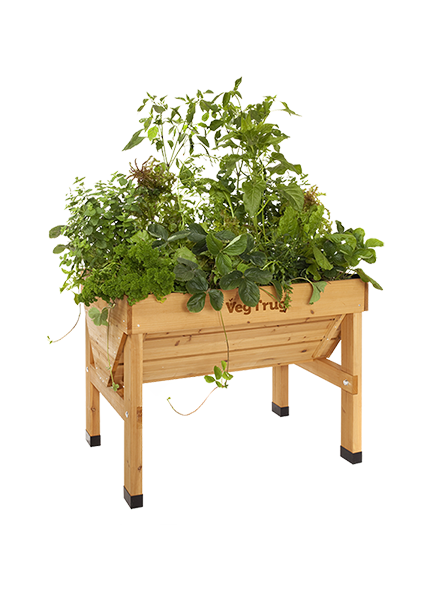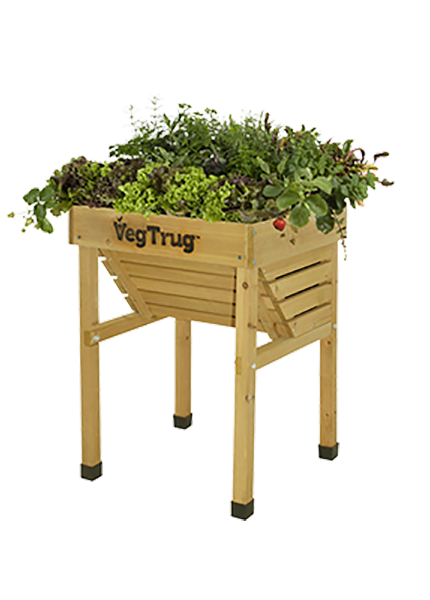With its striking blue flowers and recognisable needle-like leaves, rosemary is both tasty and pretty. Rosemary has a pine-like fragrance and this evergreen herb has become a favourite seasoning, most popularly with lamb. Chopped up it makes a refreshing tea that’s used to aid digestion. Bees love it too.
Read more about this versatile Mediterranean herb in our ‘how to grow rosemary’ guide.
Rosemary loves the sun and to thrive will need six to eight hours of full sunshine a day. But it’s best to keep it sheltered too. Plant seeds or young plants in the spring or autumn, in well-drained soil. Clay soil might need a little extra drainage added for rosemary to be successful.
It’s even better in a VegTrug because rosemary does well in containers. Rosemary can handle frosts, but young plants can fail if the roots become waterlogged during those frosty colder months. In winter, keep your container well drained and place the rosemary undercover with a VegTrug greenhouse cover or if it’s in a pot, bring it inside.
Once you’ve planted your seeds, you’ll need to know how to grow rosemary to keep yourself in fresh supply. Luckily, rosemary needs little attention, just cutting back every so often to keep the plants fresh and full. Leaving rosemary uncut might create a more twig-like plant. Add the cuttings to a lamb dish or dry them out for another time. Keep it well watered in the warmer months and add plant food every so often. You’ll need to cover them in the winter or bring them inside. Adding mulch will protect them too.
Frost can be a problem for younger rosemary plants. In the winter cover with horticultural sheets, apply mulch to protect from frosts.
Scale insects and Rosemary Beetle are other pests that you might encounter. Scale insects are often found on the underside of the leaves. They suck the plant’s sap and their secretions encourage mould.
The Rosemary Beetle is a colourful red and green metallic beetle. The beetle and its larvae will quickly eat the leaves.
You can pick the beetle off by hand and with scale insects you can try biological controls, such as removing affected leaves and introducing natural predators before using pesticides.
Once you know how to grow rosemary properly, you can enjoy it all year round but using fresh growth during the warmer months definitely tastes best. Cut off a branch and add it to a roast or add a few fresh leaves to a tomato soup. If you want to store your rosemary, dry it in a warm, airy space and keep the leaves in an air-tight jar ready to throw into a garnish or butter whenever the fancy takes you. Rosemary doesn’t freeze well though.
How to grow rosemary is part of the VegTrug Grower’s Guide.

